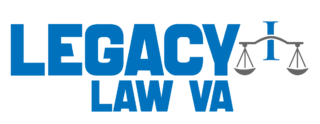Vacuum extraction, while often necessary, can lead to several complications for infants. These complications range from minor injuries to more severe conditions that require immediate medical attention.
Maternal Risks Associated with Vacuum-Assisted Deliveries
Vacuum-assisted deliveries, while often necessary, come with their own set of risks for mothers. These risks can range from minor injuries to more severe complications that may have long-term effects.
Factors Contributing to Vacuum Extraction Complications
This process, while often necessary, can lead to vacuum extraction complications due to several factors. Understanding these factors is crucial for minimizing risks during delivery.
Improper Cup Placement
One of the primary causes of complications is improper cup placement. If the vacuum cup is not correctly positioned on the baby’s head, it can lead to ineffective traction and potential injuries. Proper training and experience are essential to ensure correct placement.
Excessive Traction Force
Applying too much force during extraction can cause serious injuries to both the mother and the baby. Excessive traction force can result in skull fractures, brain bleeds, and other severe complications. Practitioners must be cautious and apply only the necessary amount of force.
Prolonged Extraction Attempts
Attempts to extract the baby should not be prolonged. Prolonged extraction attempts increase the risk of trauma and complications. If the baby is not delivered within a reasonable timeframe, alternative methods should be considered.
Sequential Instrument Use
Using multiple instruments sequentially, such as switching from a vacuum extractor to forceps, can increase the risk of injury. Sequential instrument use should be limited to highly experienced practitioners and only in specific cases where it is deemed absolutely necessary.
Preventive Measures and Best Practices
Informed Consent and Risk Communication
Before any vacuum extraction, it is crucial to have informed consent from the patient. This involves explaining the need for the procedure, discussing the risks and benefits, and presenting alternative options. Early discussions during prenatal care can help reduce misunderstandings during labor.
Limiting Traction and Pop-offs
To minimize complications, it is important to limit the number of tractions to 4 or 5, with careful monitoring after the third attempt. Unintended cup detachments, or pop-offs, should be limited to no more than 2 or 3. If the procedure proves difficult, it should be abandoned.
Monitoring and Immediate Post-Delivery Care
Close monitoring during and after the delivery is essential. Immediate post-delivery care should include checking for any signs of complications in both the mother and the infant. This helps in early detection and management of issues like subgaleal hemorrhage.
Training and Skill Development for Practitioners
Proper training and skill development for practitioners are vital. This includes understanding the correct technique, knowing the indications for vacuum extraction, and being able to handle complications. Continuous education and practice on models can enhance the skills needed for safe deliveries.
Legal and Ethical Considerations
Medical Negligence and Malpractice
Medical negligence in vacuum-assisted deliveries can lead to serious neonatal complications. If a healthcare provider fails to follow standard procedures, they may be held liable for any resulting injuries. Common claims include improper use of the vacuum extractor and failure to obtain informed consent.
Patient Rights and Informed Consent
Patients have the right to be fully informed about the risks and benefits of vacuum extraction. In emergency situations, this can be challenging, but it is crucial for healthcare providers to communicate effectively. Informed consent ensures that the patient understands the potential complications and alternatives, such as a cesarean section.
Documentation and Reporting
Accurate documentation is essential in cases involving vacuum extraction. Detailed records help in assessing the situation and determining if the standard of care was met. Proper reporting can also aid in identifying patterns of complications, which can be used to improve future practices.
Ethical Use of Vacuum Extractors
The ethical use of vacuum extractors involves balancing the benefits and risks. Healthcare providers must consider the well-being of both the mother and the infant. Ethical dilemmas often arise when deciding between vacuum extraction and other delivery methods, such as forceps or cesarean section. Practitioners should adhere to guidelines and best practices to minimize risks.
Comparing Vacuum Extraction to Other Delivery Methods
Vacuum Extraction vs. Forceps
Vacuum extraction (VE) and forceps are both tools used to help with difficult deliveries. Over the years, vacuum extraction has become more popular, especially in the United States, where it is used in more than 80% of assisted vaginal births. One reason for this shift is that VE is generally easier to use and requires less anesthesia compared to forceps. However, forceps might be preferred by some older doctors due to their training and the belief that forceps offer better control during delivery.
Vacuum Extraction vs. Cesarean Section
When comparing vacuum extraction to a cesarean section (C-section), the choice often depends on the situation. VE is less invasive and has a quicker recovery time for the mother. On the other hand, a C-section is a major surgery and comes with its own set of risks, such as infections and longer hospital stays. However, in some cases, a C-section might be the safer option for both the mother and the baby.
Success Rates and Complication Statistics
The success rates and complications of vacuum extraction can vary. VE is generally successful, but it can sometimes fail, especially if the baby’s head is not in the right position. Forceps might have a higher success rate in such cases but come with a higher risk of perineal trauma. C-sections, while usually successful, carry the risks associated with major surgery.
Choosing the Appropriate Method
Choosing the right method for delivery depends on various factors, including the mother’s health, the baby’s position, and the progress of labor. Doctors must weigh the benefits and risks of each method to make the best decision for both the mother and the baby. Informed consent and clear communication about the risks and benefits of each method are crucial for making the right choice.

